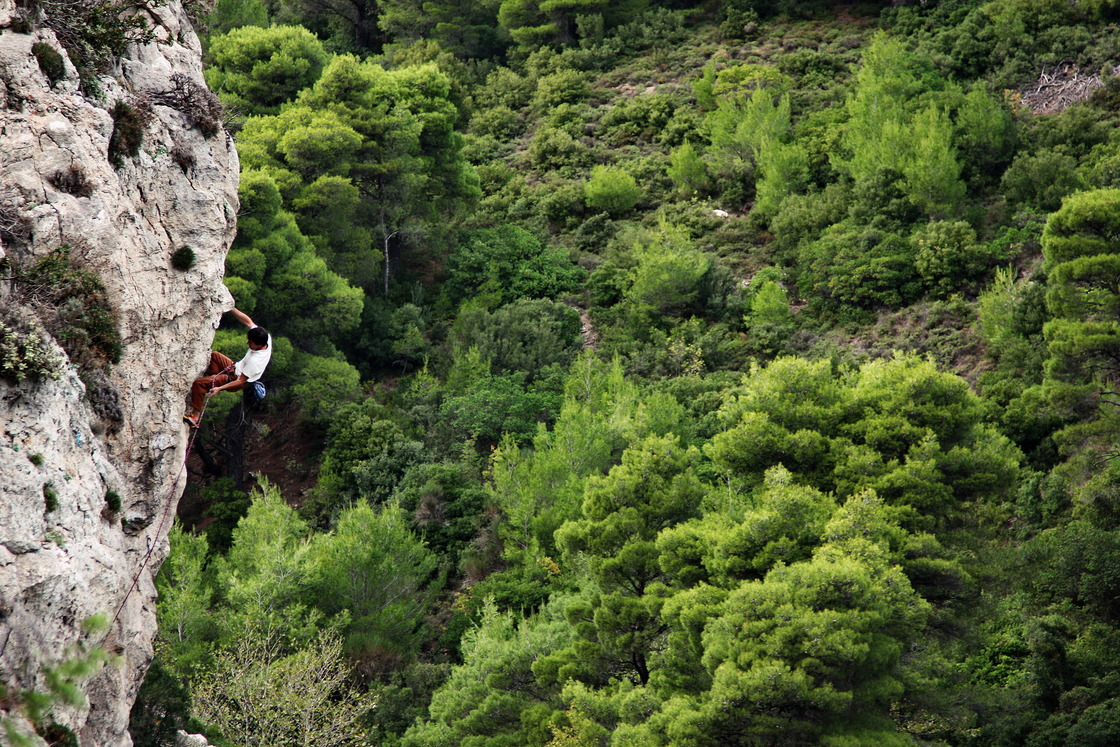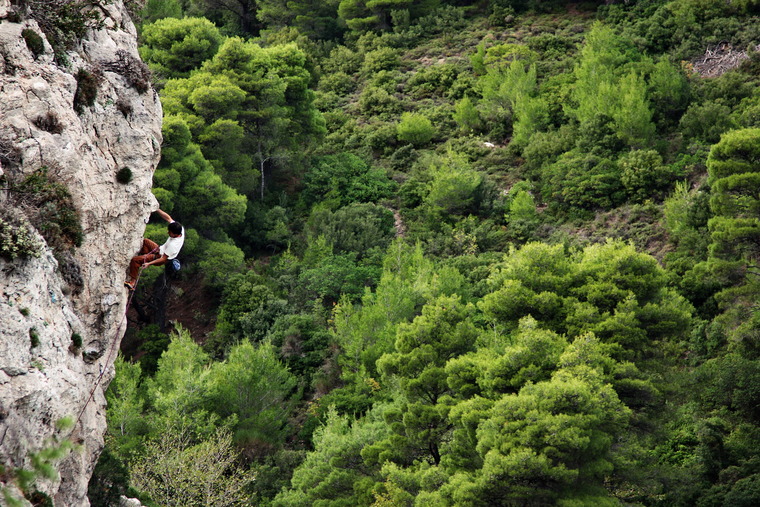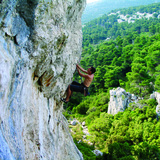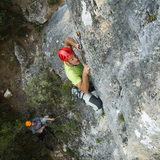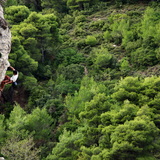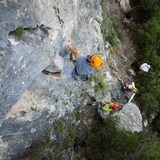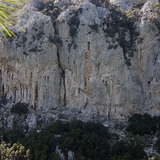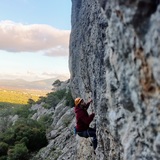One of the most popular Athenian cliffs, Korakofolia (literally meaning: “Raven’s Nest” in Greek) is located inside the gully of Ag. Georgios close to the suburb of Thrakomakedones, on southeast Parnitha. Korakofolia has grown to become a hugely popular summer crag for Athens-residing climbers. The crag is sweetly located, surrounded by pine forests sheltering the area from the summer heat. The place is a natural cooler, truly a haven for climbing during the hot summer months when downtown Athens is a boiling cauldron. Due to location and the user-friendly grades / bolting, Korakofolia is an extremely well-liked cliff.
Climbing in Korakofolia offers great variety. Vertical walls on crimps and pockets are predominant but one can also find overhanging routes, even the occasional tufa. Dihedrals and winding cracks are also present on some of the most distinctive and beautiful routes of the crag. The rock is solid limestone, sharp in places. The crag has been meticulously cleaned of most loose rock. Scattered among the hundreds of shiny bolts one might encounter the odd piton or non-certified bolt (on old routes). These items are not to be relied upon but fortunately are never necessary.
